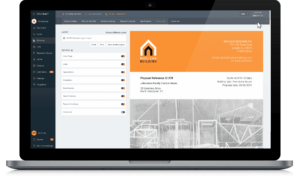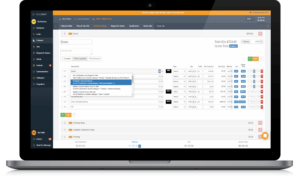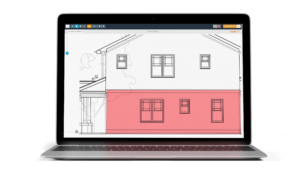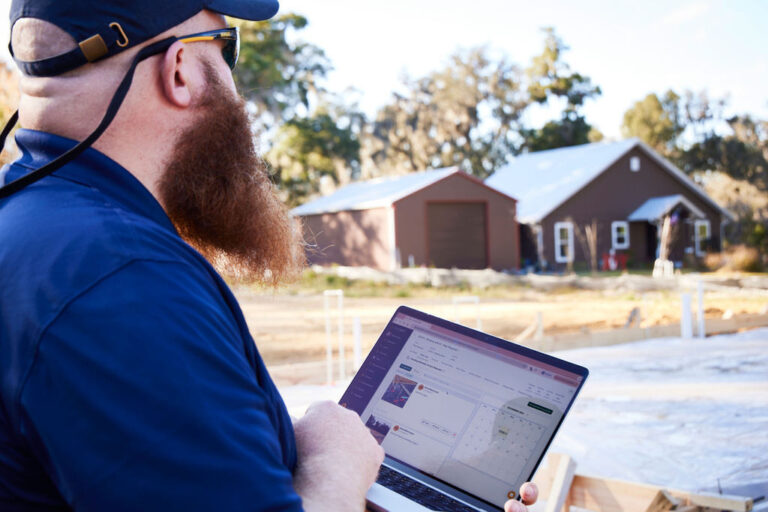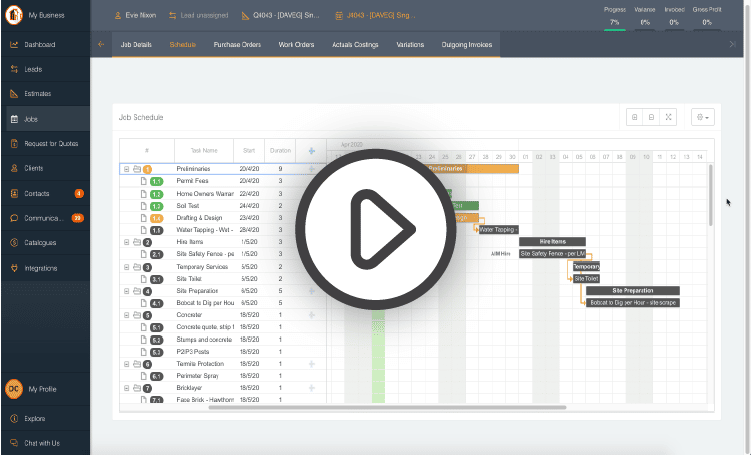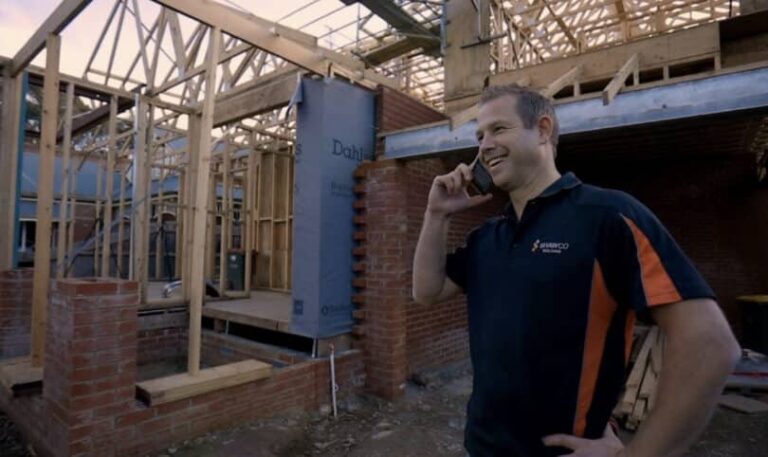Home construction is a seemingly straightforward task that brings together a complex set of people and commercial interactions. As a result, estimating costs for home projects can vary wildly, and the reasons can be hard to explain to homeowners.
This makes managing overhead expenses, properly pricing a construction job and maintaining a reasonable profit one of the most challenging parts of running a construction business.
A pricing strategy makes your business more predictable
If you overestimate your pricing, then homeowners will see you as uncompetitive compared to quotes from your competitors. If you underestimate, then you risk having little to no profit margin. Running out of money, leaves you with the difficult decision to renegotiate with your client. And, if you haven’t documented your estimate in detail, you likely have little to stand on when negotiating.
This is why you need a consistent pricing strategy that spells out all your costs in detail. With this in hand, you can accurately quote for home construction contracts confident that you have a healthy profit margin.
How to accurately quote more custom home jobs
There are two elements to an accurate quote. The first is the cost estimate, which represents the total cost of what it will take to complete a project. The second is a cost budget, which is the amount of money you dedicate to spend on a job.
These numbers should be different because the budget should include money for contingencies to cover sudden, unexpected costs and are not part of the direct costs of building a home.
From that budget, you then add the markup to achieve a profit margin that covers other indirect costs, such as overhead and labor burden. Covering these contributes to the overall success of your business.
Note all types of project direct expenses and overhead costs
The cost estimate needs to account for multiple different things, and it’s important to take the time to properly analyze each.
Estimate the labor costs for your market
You can arrive at the labor estimate by calculating how many workers you’ll need and for how long you need them.
Most construction projects involve several different teams of contractors, who will be on-site for some (but not all) of the time, working with a specific set of materials.
For example, say that you need three workers for a project. Let’s assume for this example that you also have your own employee on site for five days, and then hire subcontractors for other tasks. You would calculate costs as one employee’s hourly rate salary for the week, and then the total quoted cost from each subcontractor, which might be hired using a daily or hourly rate. Those rates reflect the local demand for those skilled subs in the market where your project is located.
Remember – projects can run long, and that means the cost of labor will increase in kind. Make sure the job costs calculation includes a buffer to allow you to keep people on a project for longer than anticipated if needed.
Experience will help you to better predict delays for certain types of home projects. Newer builders will hire trusted contractors who can guide them based on their own past work.
Estimate the material costs
It can be relatively easy to calculate material costs if you keep the proper records. Note all the materials that you’ll need for the project (both in terms of the supplies for the actual construction and whatever equipment you might need to use). Those notes will guide through the current work and serve as the basis for future work of similar size and scale.
The better records you keep, the more consistent your material estimates become. So it pays to keep your records in a centralized place that allows for easy access.
Remember that you have overhead expenses
Running a business involves more than simply paying the direct job costs. You have an office, and it needs to be powered. You have software and other technology to pay. You’ve got a website, office vehicles, marketing costs and the insurance and other burden that come with hiring and paying employees.
Make sure you calculate all of these business overhead expenses and factor them into your job costing system. Otherwise, you’ll find that the busier you become, the more money you lose.
Consider how standard the project is
The more specialized the project, the more it’s going to vary the cost from the basis set by your past work. If you’re providing highly specialized services, anticipate that there will be unforeseen circumstances, and factor that into your pricing strategy as well.
For example, if you need a very specific material, like solar panels, factor in the additional time it might take to source and then have delivered to the site.
Consider taxes
Since you’ll be collecting revenue on the completion of the project, you’ll also need to calculate tax and add annual business taxes into the pricing strategy.
You can calculate this by determining the profit that you expect to make per day, determining what you would pay in taxes if you earned this rate all year, and then determining the daily tax rate.
Consider the competition
After all the above, it can still be difficult to determine how much profit you should factor into your quote.
To help guide this, look at what your competitors quote for jobs. You can do this discretely by tracking customer conversations about competitors on social media or by researching standard pricing information available through government and trade media sources.
Resist trying to match a competitor that is undercutting the market, and don’t be that business yourself. Always chasing the bottom line, just to win a job, has long-term consequences.
The closer you slash your margin, the more high-risk your custom home projects become and could very slip your business into being unprofitable. Long term, your service standards and reputation will suffer from always chasing the lowest possible cost.
The best method of pricing business expenses
There are several “best practices” that can help you provide a reasonable quote to a client – one that doesn’t try to overcharge for your services, but generates the profit you need to run a sustainable business:
Never guess, always calculate
There is no cost that can’t be calculated out in full before any quote. Avoid using approximations and generalizations. Note everything down to the cent, and use technology to make the calculations to avoid human error.
Assess every job on a job-to-job basis
The costs of materials and subcontractors can fluctuate rapidly. Avoid the temptation to overly standardize your pricing strategy, even if it will seem like a time-saver. Pricing templates are great for getting estimated costs started, but final estimates must reflect local and current market conditions. And for that, you’ll need updated pricing for materials and labor.
Avoid haggling
Often a client will come back and request that you lower the price from your quote. It can be tempting to negotiate as part of your pricing strategy, but remember, that your original quote should be carefully calculated to account for everything, and it’s your profitability that’s being affected if you agree to cut the price down.
Remember, even if you negotiate your price down, the customer is going to expect the same service and you can’t reduce the price of materials and labour in kind. What happens then? The builder typically absorbs the cost difference.
How Buildxact can help?
Having high-quality construction industry software can help with both your costing and keeping the budget under control.
Buildxact allows you to keep a real-time view of the cost of all your job costs, including materials, equipment and contractors, while also managing staff and tracking overheads. This intelligence means that you’re able to generate accurate and timely quotes more quickly.
Buildxact also includes comprehensive scheduling features. This helps to keep a project on track and, when pushback does occur, will immediately notify relevant parties. This can help to mitigate against the costs of pushbacks, and ensure that the project runs to budget.
By following these simple strategies, you’ll be able to develop a confident pricing strategy, and then ensure that your business is competitive while also maintaining a reasonable profit margin.
Ready to put the theory into action? It’s easy to learn how to price construction jobs accurately and efficiently with Buildxact software. If you want to get started right away, jump in with a no-risk trial to Buildxact.





